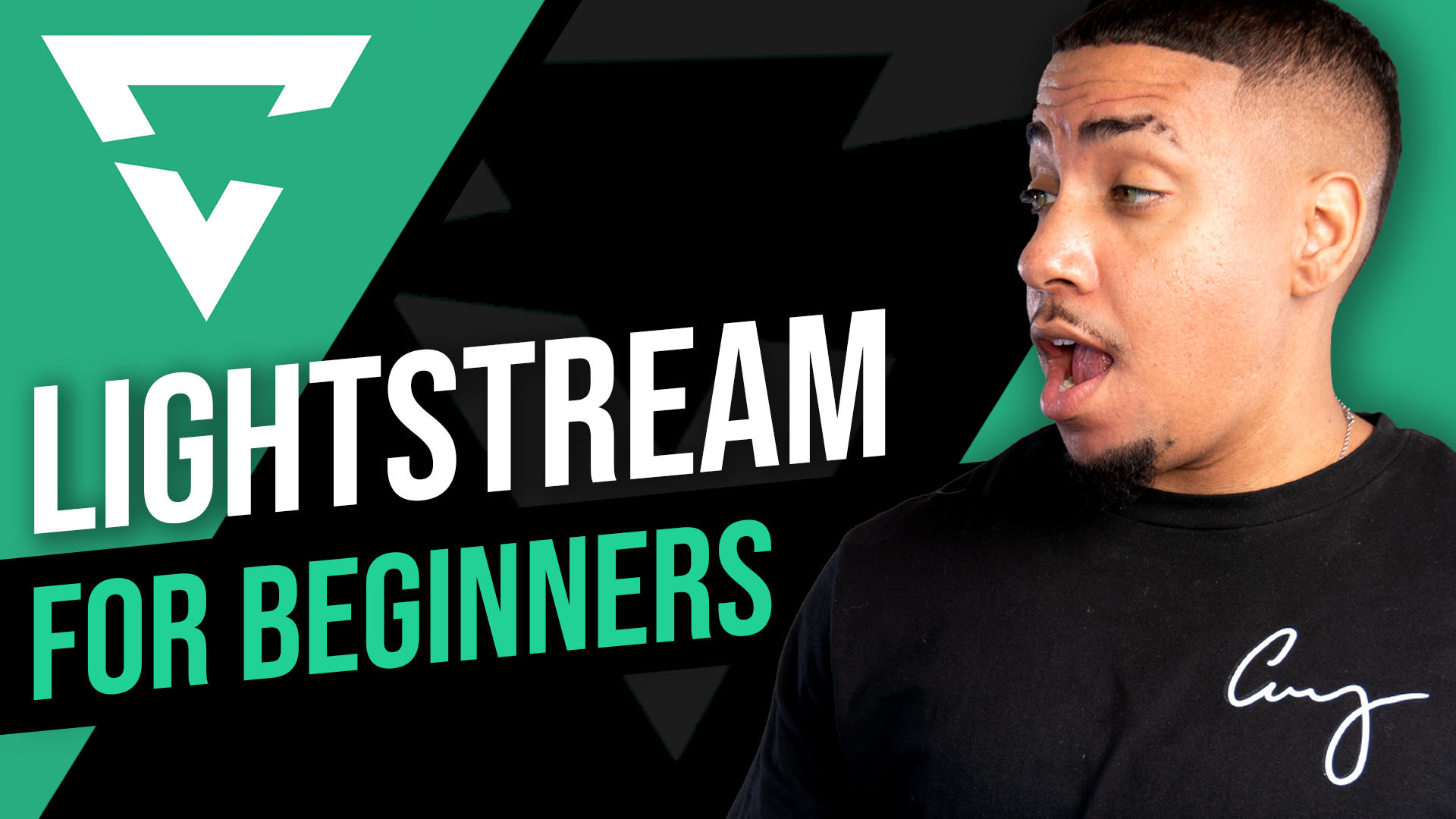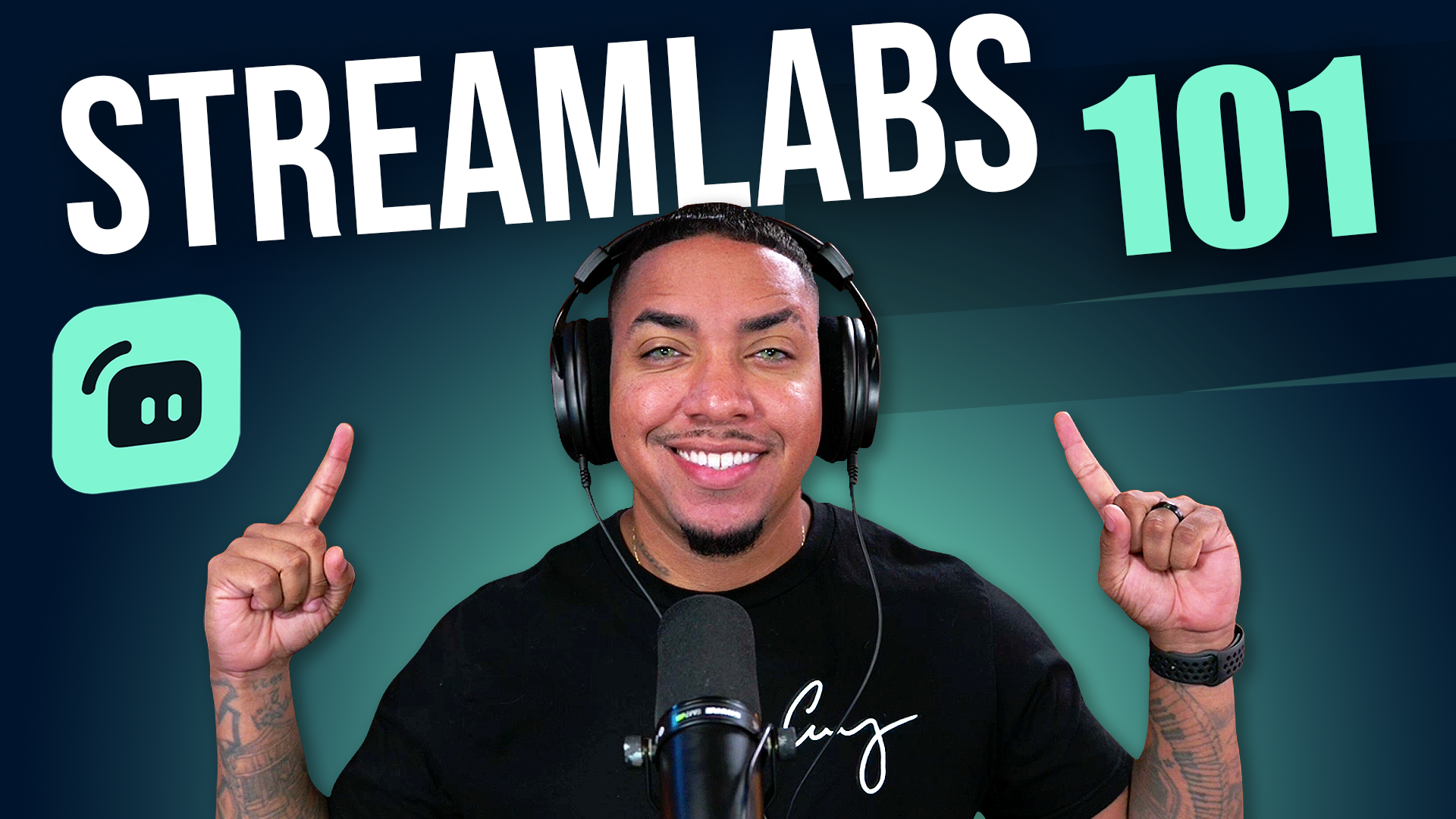Disclosure: Some of the links below are affiliate links. This means that, at zero cost to you, I will earn an affiliate commission if you click through the link and finalize a purchase. Learn more!
In this tutorial, you’ll learn the best settings to use in OBS Studio to get the highest-quality video and audio recordings. These will help you whether you’re recording gameplay or footage from your camera directly into OBS Studio version 30 using a Macbook.
Step 1: Establish Your Video Settings
Firstly, you’re going to go to settings in OBS Studio and head to the ‘Video’ tab on the sidebar.

Right away, you’ll see the ‘Base (Canvas) Resolution’. This setting needs to match the resolution that your monitor is outputting. For myself, I have a 1080p monitor, so my ‘Base (Canvas) Resolution’ will be 1920x1080. If you have a 4k or a 1440p monitor, you would put in those resolutions here.
Let’s head down to ‘Output (Scaled) Resolution’. This should be the same as your base resolution to make it easier for the software to process. Now, we’ll jump down to ‘Common FPS Value’ which you’ll either set to 30 or 60 FPS. 60 FPS is better suited to recording gameplay, and 30 FPS is better for recording directly from your camera into OBS.
Step 2: Adjusting Your Output Settings
Heading back over to the sidebar, we’re going to switch to ‘Output’ settings and then go to ‘Recording’. This is where we’re going to establish our settings; it is very important to not skip over these skips or else you risk losing your files or having poor recording quality.

For the ‘Recording Format’, it will automatically be set to ‘MP4’, but you should change this to ‘Matroska Video (.mkv)’. There are other settings that ensure that your recording will automatically save as an MP4, but we want it to record as a .mkv file. We want to do this because if/when OBS crashes in the middle of your recording, you will be able to recover the file whereas you could not with an MP4 file.

For ‘Video Encoder’, we will want this set to ‘Apple VT HEVC Hardware Encoder’; do not have it on the H264 encoder. As for the audio encoder, set it to ‘CoreAudio AAC’. Since we’re looking at audio already, let’s switch over to the ‘Audio’ tab to finish up those settings.
Once on this tab, you just want to make sure that the track you’ve selected has an ‘Audio Bitrate’ of ‘320’ to ensure the best audio possible.

Now, we can head back to the ‘Recording’ tab to set up the encoder settings. These are extremely important as they determine the quality of your stream. By default, these will be set to ‘CBR’, and a good bitrate to use with this is ‘18,000’. This seems to be a sweet spot, but you could even go up to ‘20,000’

However, you may want to utilize ‘CRF’ instead of ‘CBR’. CBR stands for constant bit rate, which means that if you’re recording gameplay or recording footage from your camera, it will consistently keep your bit rate at 18,000. This will produce larger files and create resources that are not needed.
A good example of this is if you’re playing a game and you’re in an action scene, you’ll of course want to utilize the best bitrate possible. However, if you’re just standing still, you don’t need that high of a bitrate, but you will still be utilizing it since your settings are set to CBR. This is why CRF is good; it will only use these resources as needed and will give you a good quality stream that takes up less storage space and resources.
By default, CRF will be set to have a ‘Quality’ of ‘60’. You can tweak this between 60-80 to still have a good quality stream. I prefer to keep mine on 80, but it really depends on your personal preference and need for quality.

As for ‘Keyframe Intervals’, I’m going to leave mine on zero (it will automatically be set to zero), however, you can put it up to 2. ‘Profile’ should be left as ‘main’. It is also very important that you do not check ‘Use B-Frames’.

Step 3: Adjusting the Advanced Settings
Next, you’ll need to head back to the sidebar and go to ‘Advanced’ settings.
You’ll want to make sure that your settings are the same as what I have below.
- Color Format: NV12 (8-bit, 4:2:0, 2 planes)
- Color Space: Rec. 709
- Color Range: Limited
- SDR White Level: 300 nits
- HDR Nominal Peak Level: 1000 nits
- Be sure to check ‘Disable macOS V-Sync’
- Also, check ‘Reset macOS V-Sync on Exit’

Remember from the beginning how I said you didn’t want to record in mp4, but that you wanted it to save as an mp4 file- here’s how you do that.
Below the ‘Video’ settings are ‘Recording’ settings and you’ll need to check ‘Automatically remux to mp4’.

This will allow you to have the safety of recording using an MKV file, and once you’ve confirmed that the recording is done, it will save as an mp4. This is one of the most important things that you need to set.
Step 4: Adjusting Your Audio Settings
Going back over to the sidebar, we’re going to switch to the ‘Audio’ settings.
Here, you’ll need to ensure that your ‘Sample Rate’ is set to ‘48 kHz’ and that the ‘Channels’ are set to ‘Stereo’.

This is also where you’ll be able to set where your audio is recorded from. For myself, I use a RODECaster Pro II Chat microphone, so all of my audio is recorded into an interface where I can control it. Whether you’re also using an external microphone or if you’re using your computer's audio, this is where you’ll set your audio input.

As for ‘Decay Rate’, I have mine set to ‘Fast’ and I have ‘Peak Meter Type’ set to ‘Sample Peak’. Everything else should just be set to default.
Step 5: Finishing Up
All there is to do now is press ‘Apply’ and you can start recording!
These settings are going to give you the best possible audio and video recordings, however, if you are streaming from OBS Studio, these are not the right settings for you to use. To learn how to get the best setting for streaming, check out this video here. To follow along with a video tutorial to accompany this, click here.
As always, be sure to check out Stream Designz to get the best, professional overlays for your streams to really take things to the next level and get serious about your streams and recordings.




Share:
Best OBS Settings to Stream on YouTube on Mac
How to Edit Gaming Videos Using CapCut